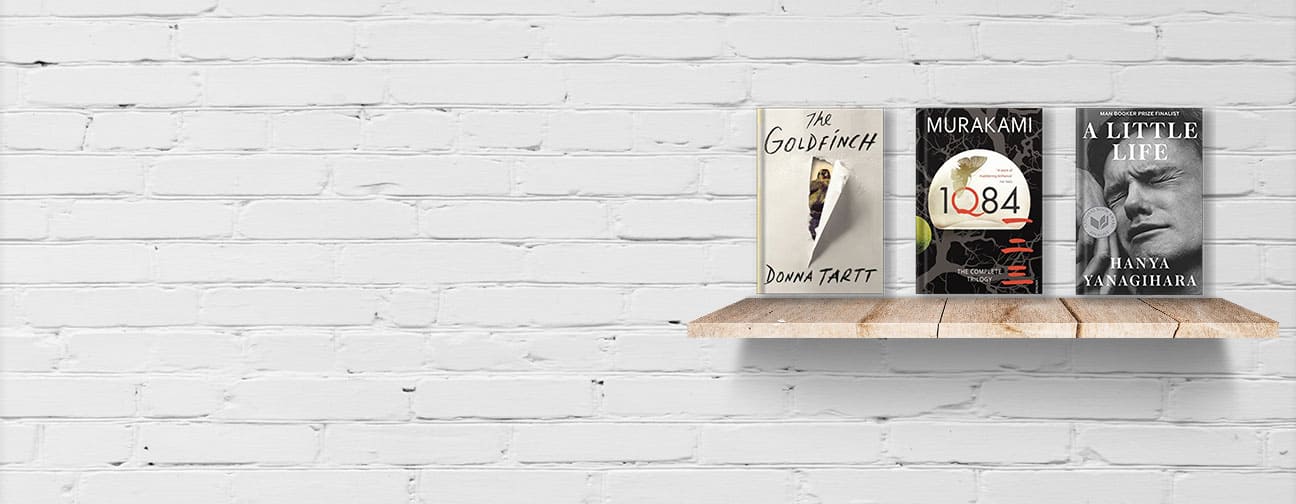As someone who considers herself a hopeless romantic, I owe a lot of my romantic inclinations to literature. Growing up, I would often daydream about my very own Mr. Darcy confessing his undying love for me. And while the fantasy has given way now that I am an adult—well, it’s still simmering underneath the comparatively mundane realities of adult life—I still feel the pull of a greatly-written fictional character more than any man I actually know.
Such is the power of well-written romance!
But in order to inspire the kind of loyalty and familiarity characters like Noah Calhoun, Romeo, or Mr. Rochester do, one needs to write a romance novel that stands out from the crowd. You need to elevate your story and make it more than the run-of-the-mill boy-meets-girl trope.
We’re not saying there’s anything wrong with sticking to the formula—after all, it works.
But if you’re putting out the same thing as everyone else, the chances of you finding devoted readers and iconic familiarity are slim to none. Your book will still sell, and it might even become a bestseller, but there’s no sense of immortality to this work or its character.
Great characters never die—even when they die; think Jack from the Titanic.
And those are the kind of characters and stories we want to help you write. With the right mixture of our help and your creativity, you could be well on your way to writing a masterpiece that a lot of young men and women may grow up daydreaming about.
In this blog, we will:
- Guide you to write individual components of a romance novel
- Tell you how to put your story together
- Share with you our list of top-3 romance authors
- Give tips to elevate your writing

How to Write a Romance Novel Step By Step
Now that you’re mentally prepared to write the best romance novel of the year, if not the decade, it’s time to see all the elements that go into it. Typically, like it is with writing any novel, romance books, too, have to have a plot, a story setting, well-fleshed-out characters, a driving force, and a satisfactory ending.
However, how you choose to work on each of these to add value to your story varies from genre to genre.
Fear not; we have mapped out all the elements that are important to a romance novel and will teach you how to write a romance novel step by step. Here are all your questions answered:
How to Brainstorm Ideas for Writing Romance?
If you have a vague concept for a novel and want to pursue it further, write a logline—a short pitch that outlines what your story is about.
For example, the logline for Wuthering Heights could look like this:
“When his soul mate marries someone else, a tortured man becomes obsessed with vengeance.”
Writing a logline for a tale concept allows you to expand it and play with its fundamental aspects. The process of testing your idea with various protagonists, motivations, conflicts, and stakes may transform a dull or already-done notion into something completely new that would for sure stay with the audience.
How to Pick Your Niche for Writing Romance Novel?
Don’t worry if you’ve never attempted to write romance; we’ll make it simple for you to get started. The romance genre is broad and encompasses a wide variety of subcategories. The following are some of the subgenres of romance for you to consider:
- Historical,
- Contemporary,
- Young adult,
- Fantasy,
- Paranormal/supernatural,
- Erotic Romance
If you’re not sure which niche your story idea belongs to, you could always start off by delving into the world of reading romance.
You can also choose from our list of best authors below to explore the category before you step into it. If, however, you already know what you’re writing niche is, you’re already ahead of most other first-time authors.
How to Create Characters Readers Will Fall in Love With?
While your protagonists—or main couple—need to be the primary focus of your story, what could make or break the storytelling are the secondary characters. This is because first-time authors usually become so fixated on writing the main characters that the other characters pale in comparison—they often come off as having no personality and only seem like props to further the story.
You don’t want that for your characters.
So, as a rule: spend a good amount of time writing all your characters. Give them traits that make them unique and instantly identifiable. For example, Mary Bennet, although a minor character in Pride and Prejudice, is known to strive for external validation.
We have just one word to say when it comes to writing the protagonists: layers!
Yep. You read that right. What deepens the complexity of a character and makes them more human are layered details. No one in the real world is completely good or bad—and no matter how tempted you might be to make your main characters void of all folly, don’t do that.
After all, how will your characters grow out of faults they never have as the plot progresses?
How to Set Your Plot for Writing Romance Novel?
Contemporary romances include comfortable, small-scale settings, such as picturesque towns or college campuses. There may be a local hangout that the key characters often visit. If you want to keep to the norm, you should have one of these “small” setups where individuals can’t help but bump into each other.
If you’re writing for a more particular subgenre, your setting may change accordingly.
The most essential factor is that your tale is engrossing and seems genuine, regardless of where it is situated. Consider sketching a map of your setting to keep the geography constant while relying on real-life features to add authenticity. For example, if the central location where your characters hang out is in a bar, think of the one you frequent the most, and take elements from it to inspire the fictional one.

How to Write a Romance Novel Outline?
When developing a novel outline, the first thing you should do is set a word count goal. The average length of a romance novel is 80,000 words. Once you’ve determined your word count goal, you may split your work into sections.
As a general rule, your romance novel should have a beginning, a meet-cute, a conflict, a resolution, and an end.
Additionally, each chapter should be written in the form of a mini-story, with a beginning, middle, and finish. A chapter should be intriguing, and something should happen in each chapter, even if it isn’t active! To put it another way, what is the purpose of each chapter? Understanding what you need to accomplish in each chapter is essential for creating a well-structured chapter outline.
How to Start Writing a Romance Novel?
One of the most difficult obstacles you will encounter is determining where to begin writing your story.
You have a limited amount of time and space—at most, a few pages—to pique your readers’ curiosity. Readers may become bored waiting for the intriguing things to begin if you begin too slowly and reveal too much of the character’s backstories. They may become confused if you begin too quickly and with too much motion. Either error can cause a reader to put the book down and never pick it up again.
You should be able to answer the question, “Why does page one take up the tale at the time it does?” persuasively.
A nice approach is to illustrate the main character’s life when it is disturbed by some form of danger or peril. The threat does not necessarily have to be life-threatening, and it is preferable if it is not complex and does not need a lengthy explanation. Beginning with action is especially successful when the scenario is simple to understand, or the danger is something the readers can connect to.
How to Write Romantic Scenes in Books That Come to Life?
When it comes to writing love scenes, they can be one of the most difficult elements to write well. What you may see as a stirring, passionate encounter in your head, could, when you write it down, very well read like dramatics! And we don’t have to tell you that this could be disastrous for your novel.
A love scene must reflect everything it stands for: a culmination of all the chemistry you have been building between your characters—everything from the idea of restraint in conversation, description, and the actions of the characters should work to move readers.
There should be lots of hide-and-seek in such situations. The lovers’ genuine sentiments will surface in the climactic moment, but even then, the strength is in what they withhold rather than what they say. The deepest sentiments in life can never be properly expressed in words. Trying to explain everything diminishes the sacredness—the profoundness of the emotion; remember this when working on this section of the book.
Bringing it all Together
Now that you have started on your main story, it is time to add more meat to your book. This can be done by adding subplots. Like secondary characters, subplots are extremely important and are, in fact, what bring the story together.
Done right, they can help you drive your story in a way that makes it stand out.
All of your subplots must be linked. A subplot that has no consequence on or effect on your story’s final conclusion should be removed. It’s similar to weaving an elaborate cloth from individual strands of thread. The conclusion will build a full tale comprised of several subplots that all connect together in the end.
Consider some of your favorite books and their subplots.
A subplot might be built around your main character’s love interest or some form of personal problem they must conquer. You might have a subplot that shows your main character’s fragility or a deep-seated longing that she isn’t even aware of. In short, do anything that works for your story.
The Three Best Romance Authors and Their Iconic Words
While this list isn’t objective and is heavily drawn from my own love for these authors, nobody can deny the genius of any of the names on this list. All these people not only produced memorable pieces of romantic fiction, but they also gave us characters we can never stop loving and plots that make us want to transcend the realms and enter the one they’ve created.
Our list of the top three includes:
Jane Austen
Whether Jane Austen is a conventional romanticist or a pragmatist who wrote about social issues—using romance solely as a plot device—is a never-ending battle. However, no matter which side of the argument you stand on, you cannot deny that she has given some of the most memorable romance stories.
Whether it’s Elizabeth and Mr. Darcy, Anne and Captain Wentworth, or Elinor and Edward Ferrars, she had us rooting for each of them since the beginning.
Here’s one of my favorite confessions of love in literature:
“I cannot fix on the hour, or the spot, or the look or the words, which laid the foundation. It is too long ago. I was in the middle before I knew that I had begun.”
—Jane Austen, Pride and Prejudice.
And one of the best moments of self-reflection:
“I have been a selfish being all my life, in practice, though not in principle. As a child I was taught what was right, but I was not taught to correct my temper. I was given good principles, but left to follow them in pride and conceit. Unfortunately an only son (for many years an only child), I was spoilt by my parents, who, though good themselves (my father, particularly, all that was benevolent and amiable), allowed, encouraged, almost taught me to be selfish and overbearing; to care for none beyond my own family circle; to think meanly of all the rest of the world; to wish at least to think meanly of their sense and worth compared with my own. Such I was, from eight to eight and twenty; and such I might still have been but for you, dearest, loveliest Elizabeth! What do I not owe you! You taught me a lesson, hard indeed at first, but most advantageous. By you, I was properly humbled. I came to you without a doubt of my reception. You showed me how insufficient were all my pretensions to please a woman worthy of being pleased.”
—Jane Austen, Pride and Prejudice.
Emily Brontë
Wuthering Heights, Emily Brontë’s one and only novel, questioned Victorian social class, gender, religion, and morality conventions. Unfortunately, her sole published work was highly panned in its early years, and Emily did not survive to see how it eventually gained acceptance to become one of the most important literary and favorite love tales of all time.
She’s written her characters so beautifully and made her plot setting so graphic that readers find themselves traveling the moors with her.
Her words have eternalized the feeling of longing that all of us can resonate with:
“If all else perished, and he remained, I should still continue to be; and if all else remained, and he were annihilated, the universe would turn to a mighty stranger.”
— Emily Brontë, Wuthering Heights.
And have immortalized a sense of belonging we have all felt at some point:
“He’s more myself than I am. Whatever our souls are made of, his and mine are the same.”
— Emily Brontë, Wuthering Heights.
Nathaniel Hawthorne
Hawthorne’s works are associated with romanticism, notably dark romanticism, which suggests that guilt, sin, and evil are the most essential natural elements of humanity. Many of his stories and novels are historical fiction; however, Hawthorne’s representation of the past serves primarily to illustrate themes of generational sin, guilt, and punishment.
The Scarlet Letter was one of America’s first mass-produced novels, and it was an instant success. It has received accolades for its tenderness and moral purity.
This is one of the best moments in the book:
“Love, whether newly born or aroused from a deathlike slumber, must always create sunshine, filling the heart so full of radiance, that it overflows upon the outward world.”
―Nathaniel Hawthorne, The Scarlet Letter.
And his work also offers one of the best reality checks:
“She could no longer borrow from the future to ease her present grief.”
―Nathaniel Hawthorne, The Scarlet Letter.

How to Write a Romance That Puts You on the List?
There’s more to creating a masterpiece than just following the same rules as everybody else. Sometimes you need to add something extra to set yourself apart. Here are three tips that can instantly take your writing from average romance to potentially award-worthy work!
Build Chemistry and Amp It Up
Your characters must connect with one another in order to form a relationship. Some story structures recommend that there be at least three scenes in which the characters meet before they kiss or get together.
Determine the types of situations that will bring your characters together. Allow them plenty of alone time together.
Make their impressions of one another stronger and more personal in each scene. If either of them has any emotional scars or baggage, illustrate how falling in love might help them heal.
Introduce Separation to Sweeten the Reconnection
Your couple must come together. That is, after all, the whole idea of the relationship. However, if your happy ever after arrives too quickly, your romance story will be very short and undeveloped.
As the overall story continues, your pair may decide to date for a time, or they may conclude that they are incompatible after just one night.
How long the pair may be together before being torn apart is determined by the length of your story and how you want any secondary plots to develop. Allow them to meet in secrecy for months before finally coming out with the relationship. Or simply give them one passion-filled evening before one of them decides to go.
Bringing them together after they’ve been apart is going to add to the chemistry even more.
Happy Endings Aren’t Always the Answer
Some authors, such as Nicholas Sparks, have had significant success with tear-jerker endings. Before the conclusion, there should be a positive conclusion for the main characters that can still help bring a sense of fulfillment to the readers as they gear up for a sad ending. In other words, the finale should satisfy the reader with the conclusion of the love connection.
Ask yourself: does the surviving character have a shot at a happy life if one of the characters dies? Was the love tale beneficial to the surviving character?
However, bear in mind that non-traditional romance endings should be approached with caution. At the end of the novel, there should still be some happiness. Your viewers will lose faith in you if your narrative finishes too much like a Shakespearean tragedy.
Final Words
Whether you want to learn how to write a novel with romance interwoven throughout or you want to write solely in the romance genre, you can now confidently write your first romance novel.
The fundamentals of planning and organizing a novel are the same throughout genres, but romance has its own peculiarities and unwritten conventions. If you become acquainted with these concepts, you will be able to properly build that winning romance in no time.
Happy writing!






